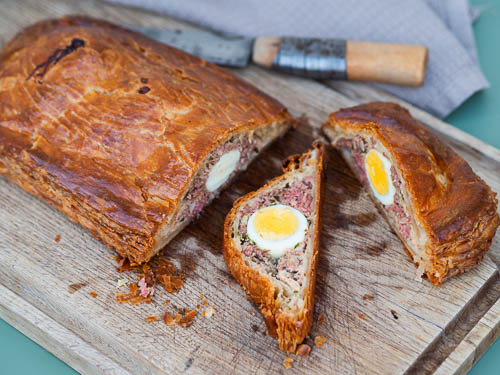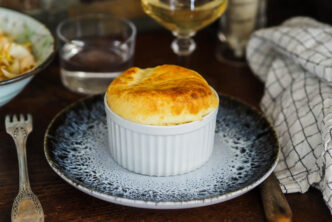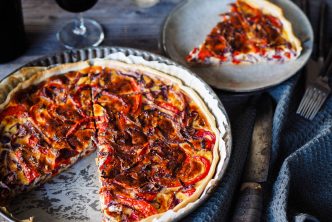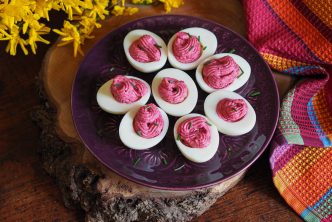Pâté berrichon is an Easter pate with eggs, a regional dish from the French Berry region. It’s a meat pie made with puff pastry filled with veal and pork meat and hard-boiled eggs.
Egg tradition for Easter
Eggs are in tradition for Easter in the Christian religion. Hiding eggs, nowadays chocolate eggs, bunnies, cocotte… that children love to search for is typical in France.
It became part of French culture and practices as even non-Christian kids impatiently wait for Easter to have fun looking for chocolate eggs and having tons of chocolate to eat during the Spring holidays.
The story behind this French regional festive cooking
Easter berrichon recipe is traditionally prepared for the family meal on Easter Day.
In the Christian religion, after the Lent period without any meat and eggs, the festive meal of Easter Monday was the occasion to eat ingredients that were neglected during Lent.
The second reason is that people needed to use the eggs accumulated over the days during Lent. Moreover, the egg symbolizes fertility.
Therefore Easters menu in France is around eggs and lamb. There are many recipes with eggs, and this one might be one of my favorites as it’s not only a starter with egg as the star, but it’s an Easter traditional dish that people enjoy all year long. A festive dish served as a starter.
What is French Easter pâté de Pâques: Originating from the French Berry region, le pâté de Pâques berrichon is a kind of a pâté en croûte savory pate.
It’s made with two layers of puff pastry filled with a mix of ground pork and veal meat and hard-boiled eggs. Eggs are here hidden in the pâté!
Pâté de Pâques means Easter pâté and berrichon means from Berry region neatly arranged in the pâté. Pâté is the generic term used in France for ground meat cooked in a dish and served cold.
This tradition of the Berrichon Easter pie persists today, and there are Easter pâtés in other French regions such as Poitou.
Berry is a province located in central France, now including departments of Cher, Indre, and parts of Creuse. Berry was historically the birthplace of several kings and other members of the French royal family. Maybe you have heard of Bourges, Berry’s main city.
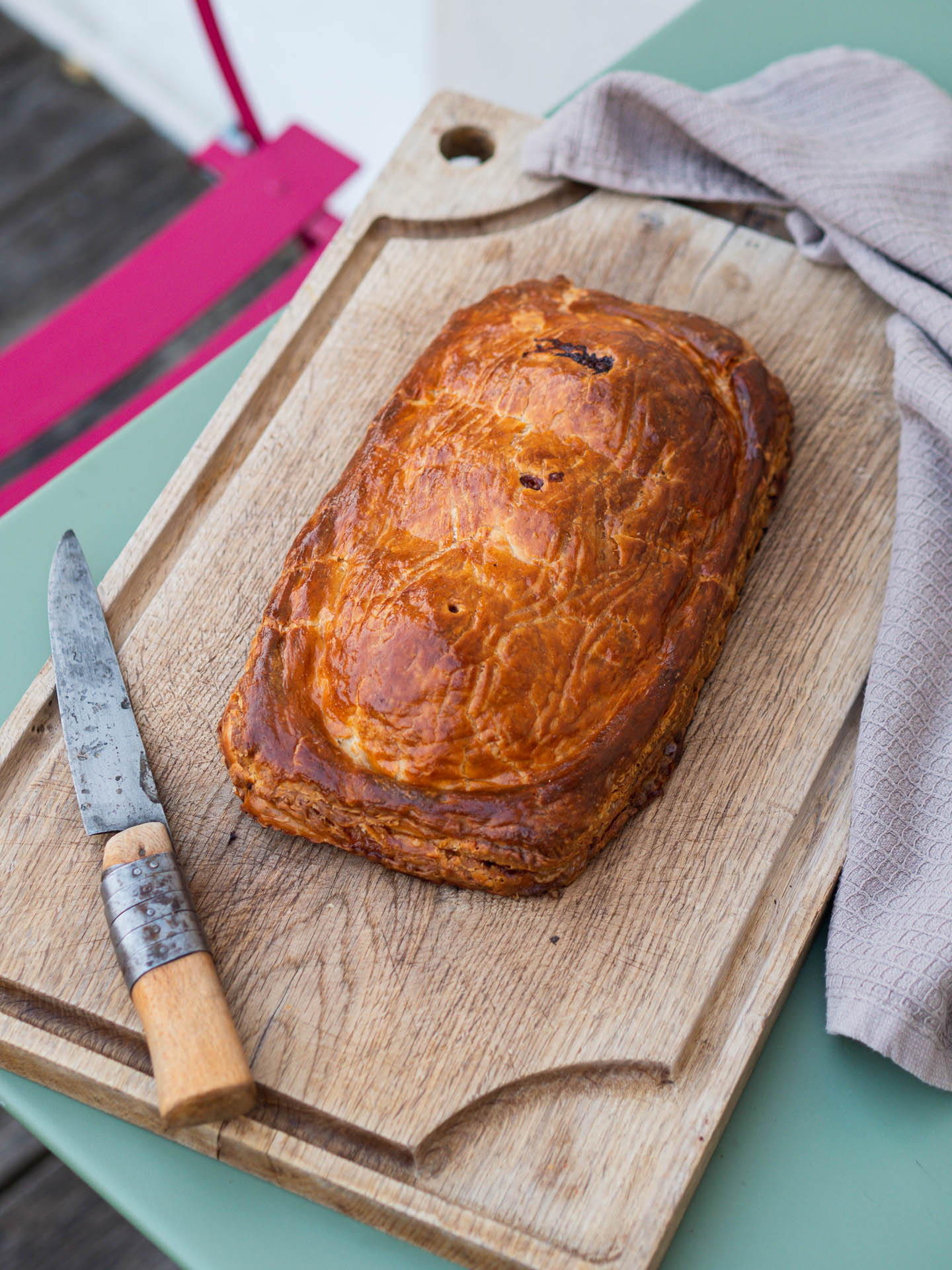
Information on the recipe
Here is some advice from my local butcher who grew up in Berry. Each year he serves pâté de pâques in his boucherie and always have a great successs.
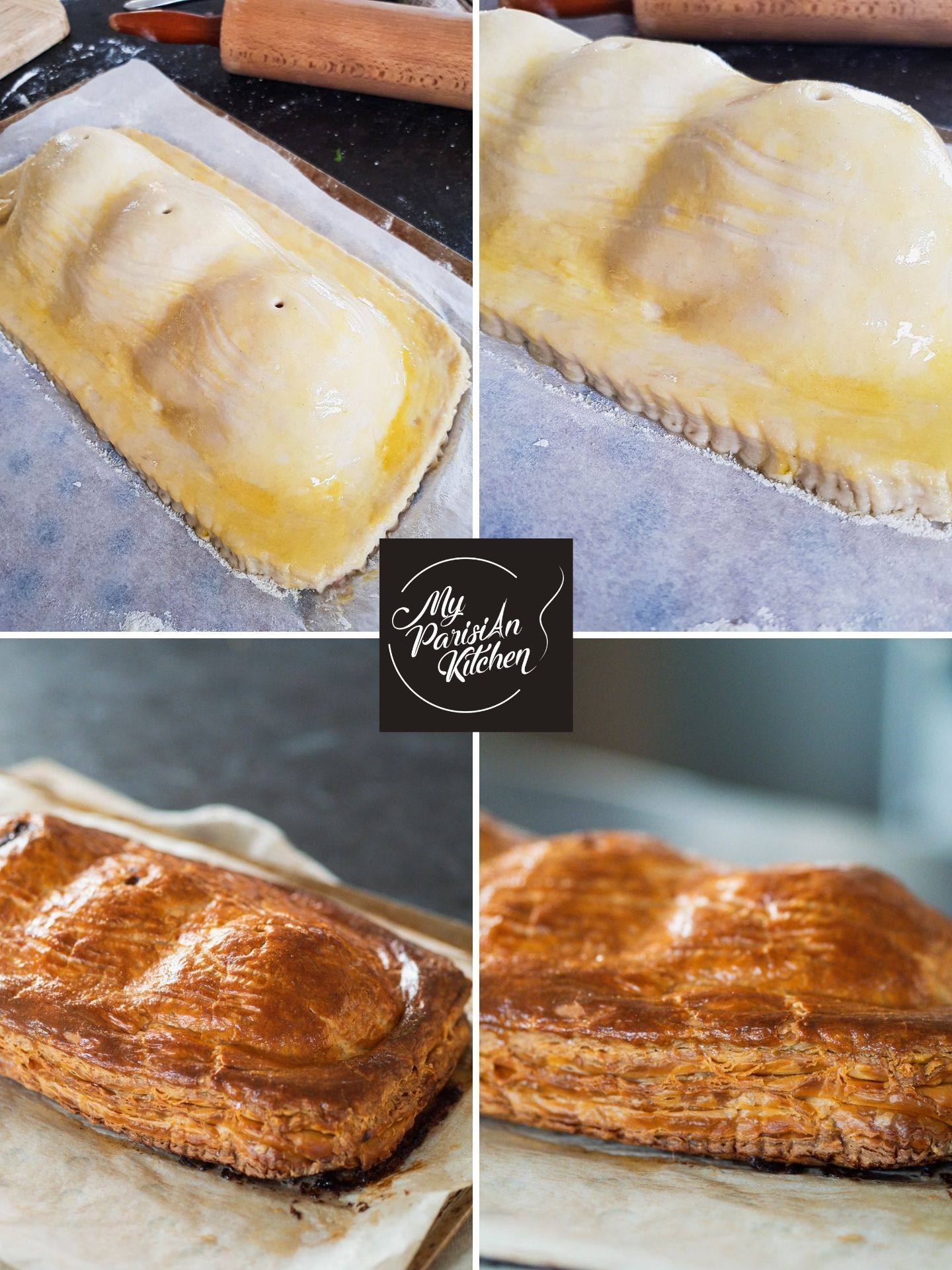
- The choice of meats: The traditional mix of meats is pork and veal (2/3 – 1/3 or half-half depending on the recipe). Some recipes won’t have any veal at all, others will be done with basic ready-made sausage meat preparation. I choose the pork-veal mix my butcher recommends.
- Flour: A bit of flour helps bind the stuffing without weighing it down, making this pâté hold well together, even when served cold.
- Cognac: You can replace it with Armagnac or even Brandy.
- Puff pastry: pastry crust is two layers of puff pastry that are sealed together here. It’s perfect for getting a fluffy and less dense result, but some people in Berry make Easter pie with shortcrust pastry.
- Seasoning: Be generous with the seasoning. Add salt, a lot of pepper, and grated nutmeg.
- Eggs: Whole peeled hard-boiled eggs are placed in the center of the meat, one next to the other lengthwise so that each slice will have e bit of egg. How long for perfect hard boil eggs: 9 minutes in boiling water, then cool down in cold water.
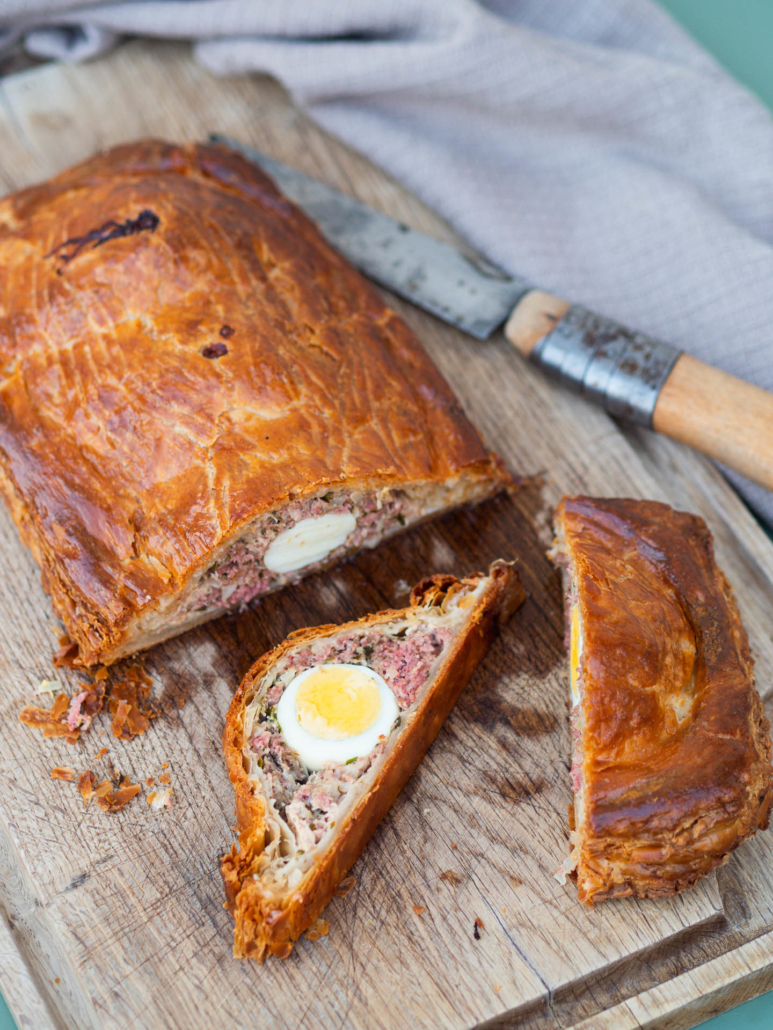
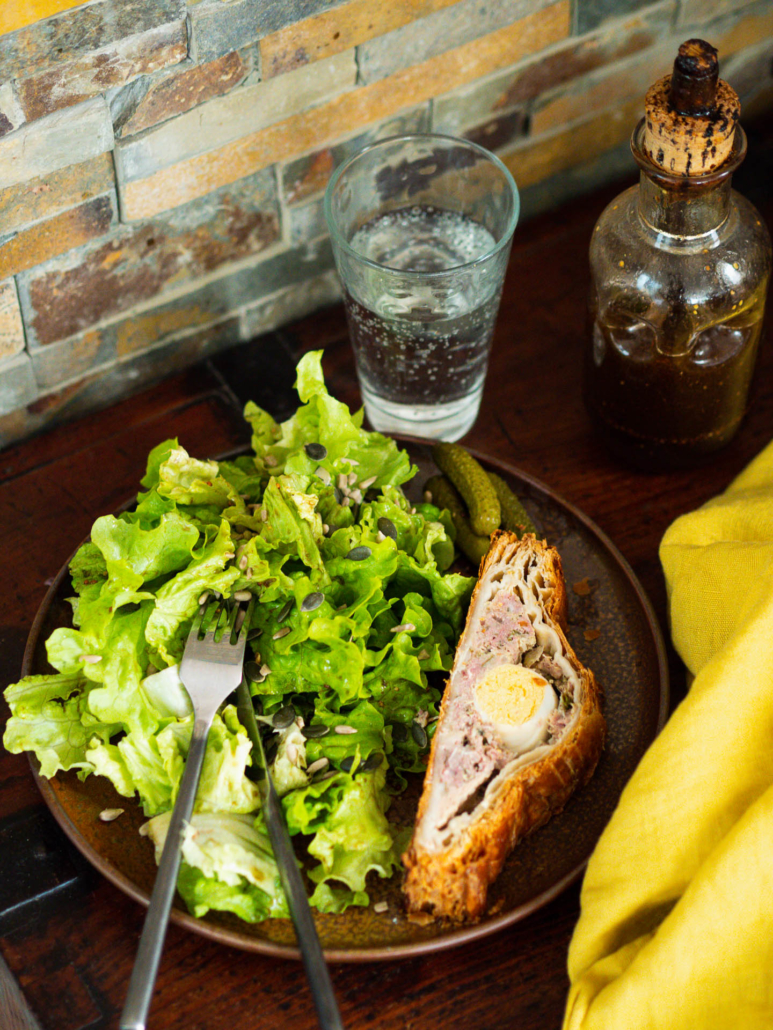
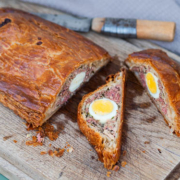
Pâté berrichon Easter Pate with Eggs
Ingredients
- 2 puff pastry ideally rectangular
- 400 gr ground pork shoulder or belly
- 200 gr ground veal Shoulder
- 2 shallots
- 1 clove garlic
- 1 handful parsley flat leaves
- 2 tbsp Cognac or Armagnac or Brandy
- 1 tablespoon flour
- 6 eggs 1 in stuffing? 4 hard-boiled, 1 egg wash
- salt
- Pepper freshly grounded
- nutmeg
Instructions
- Preheat the oven to 180°C/350°F.
Prepare hard-boiled eggs
- In a saucepan, bring water to a boil. Carefully add four eggs in and cook them for 9 minutes. Once cooked, plunge them into cold water; eggs will be easier to peel.
Prepare stuffing
- Peel and roughly chop shallots. Peel and mince garlic clove. Trim the parsley, and chop the leaves coarsely. You want to get a large handful.
- Mix the two types of ground meat. Add garlic, shallot, and parsley. Combine.
- Add 1 beaten egg, 2 tablespoons of Cognac and 1 heaping tablespoon of flour. Season generously with nutmeg, pepper, and salt. Mix well. Stuffing is done.
Prepare en croute pâté
- Roll out the two puff pastries, one for the bottom, the other for the top, which must be larger as it will cover the thickness of the stuffing. Place the bottom pastry on a baking sheet lined with parchment paper.
- Pour 1/3 of the meat filling in the center in an all-length strip, keeping 2-3 cm uncoated all around.
- Peel eggs and place them whole one in after the other in a line in the center of the stuffing strip. Depending on the length, you will need 3 or 4 whole eggs.
- Cover the eggs with the remaining stuffing. Possibly keeping the bumps of the shapes of the eggs.
- Wet the dough with water all around the stuffing.
- Cover with the second puff pastry, which is therefore larger. Eventually, cut the excess dough but leave 2 cm of dough all around (see photos).
- Press the two pastries to seal them and make small incision with a sharp knife throughout the thickness of the two pastries (again see photos).

